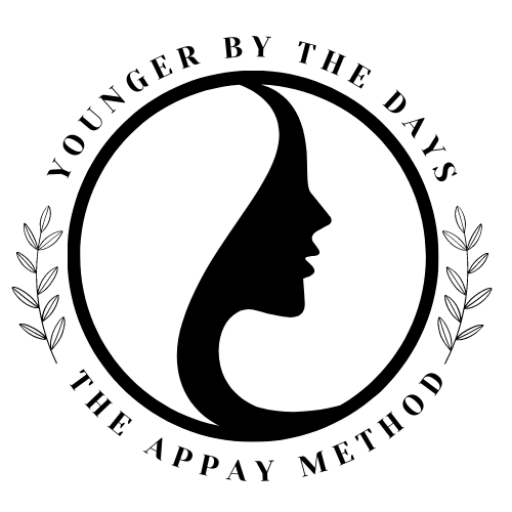In our fast-paced, modern lives, stress and anxiety have become unwelcome companions for many of us. Amidst the various strategies people adopt to cope, yoga practice has emerged as a powerful and holistic way to address the symptoms, and also target the underlying physiological processes. Let’s delve into the benefits of yoga for stress and anxiety relief.
Stress is a useful and healthy, ‘fight or flight’ response to a threat, a major key for our survival. But that response should be short-lived and followed by rest, relaxation and restoration phases. It’s well known that repetitive or prolonged acute or low-grade chronic stress is the root cause of many emotional and mental imbalances and illnesses.
Anxiety, on the other hand, is the anticipation or amplification of a potential threat. It’s intertwined with stress, although the scientific discussion about the connections between the two is still unresolved.
How does yoga help reduce stress? The science behind the effects of yoga
1. Breathing and the vagus nerve
Yoga places a significant emphasis on the conscious breathing technique, known as Pranayama. This yoga practice (and in particular Ocean breathing/ Ujjayi) activates the vagus nerve, a key player in the parasympathetic nervous system. The vagus nerve helps to regulate the heart rate, digestion, and inflammation. Deep, controlled breaths stimulate the vagus nerve, promoting a ‘rest and digest’ response that counters the ‘fight or flight’ mode associated with stress (1: Gerritsen &Alii, 2018). That’s why we’re told to take deep breaths to control our breathing in emergency or shock situations. It also makes you focus on the present moment to calm your mind.
2. Sympathetic and parasympathetic nervous systems
Stress activates the sympathetic nervous system, triggering the release of stress hormones like epinephrine and cortisol. Yoga, through its postures and mindful breathing, engages the parasympathetic nervous system. This system opposes the sympathetic response, promoting relaxation and restoration (2: Basu-Ray, 2021). Balancing these two systems is crucial for overall wellbeing and resilience to stress.
In short, restorative asanas alongside breathwork, relaxation techniques, and meditation practice restore the balance between the sympathetic and parasympathetic nervous systems. The mental and physical activity will release ‘happy hormones’ like dopamine too, improving your overall feelings of wellbeing.
What are the best yoga poses for stress relief?
8 of our favourite postures to reduce stress levels. All you need is a yoga mat and a bolster or towel. Hold each pose according to your needs and ask your teacher for personal guidance.
1. Child’s pose (Balasana)
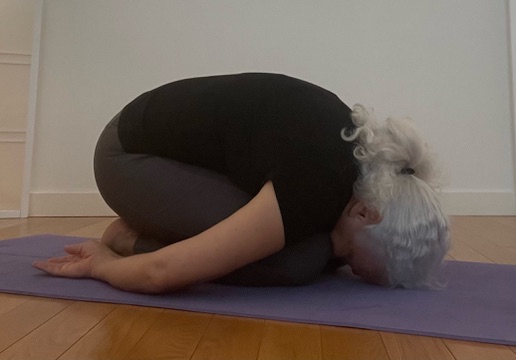
This gentle pose encourages deep breathing, fostering a sense of security and calmness. It stretches the spine, relieving tension in the back and neck.
2. Downward-facing dog pose (Adho Mukha Svanasana)
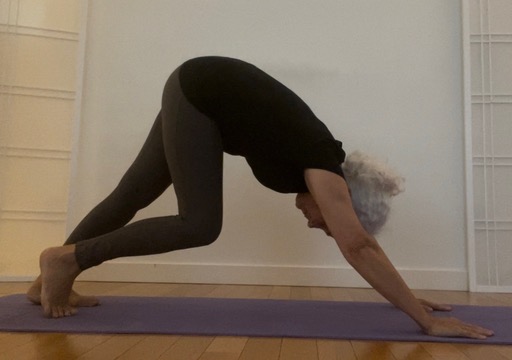
This inversion helps to redirect blood flow to the brain, reducing stress and anxiety. It also stretches the entire body, releasing muscle tension.
3. Corpse pose (Savasana)
Savasana (lying prone on your back) allows for complete relaxation, promoting mindfulness and a deep sense of tranquility. It’s a powerful tool to unwind the mind and body which is why it’s often used at the end of a yoga class.
4. Fish pose with bolster (modified Matsyasana)
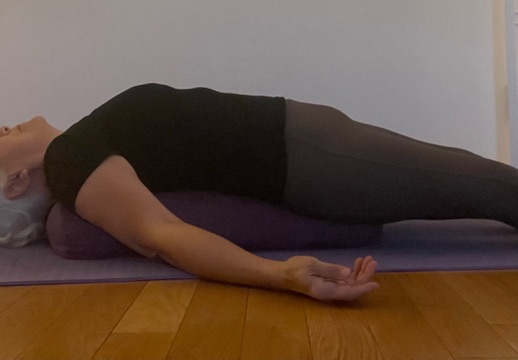
This is a classic posture in restorative yoga to open up your chest and stretch your back. Lie down with your back over the bolster (or rolled up towel) keeping it in the middle under your spine. Slide yourself back so your head and neck drop off the bolster (gently). Feel your chest opening and neck extending but don’t overstrech your neck and use a folded blanket underneath, if necessary. Keep your feet and legs relaxed. Place your hands by your sides, rotate your arms, palms face up. Let your your chest being lifted.
5. Legs up the wall pose (Viparita Karani)
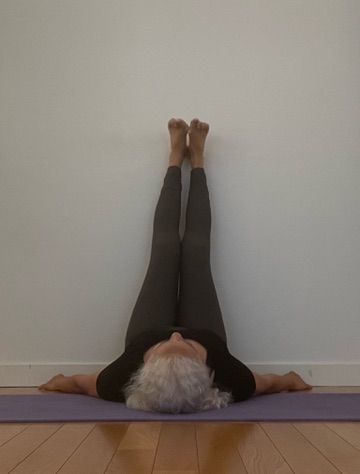
Lying on your back with your legs up the wall, hip-width apart, reverses the movement of the body and blood circulation to promote relaxation. It calms the mind, encouraging you to focus only on the present moment.
6. Rag doll pose (Uttanasana variation)
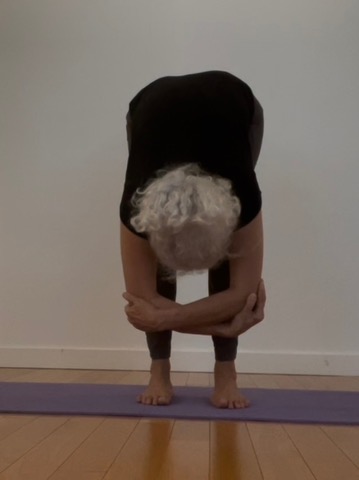
In this pose, you let go of the stress held in your upper body. You stand with your feet hip-width apart. Bend your knees and fold forward from your hips. Grasp elbows with the opposite hands and hang there. Please note that forward folds like this are not for those with high blood pressure or disk issues.
7. One-legged seated forward bend (Janu Shirasasana)
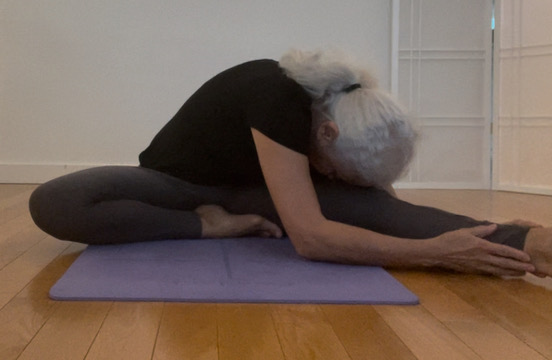
With left leg extended and right leg bent with the sole of your foot against your thigh, fold forward. Forward bend stretches like this help to elongate muscles and also encourage you to let go of limiting beliefs. In particular, this posture stretches hamstrings. Change sides.
8. Revolved abdomen pose (Jathara Parivartanasana)
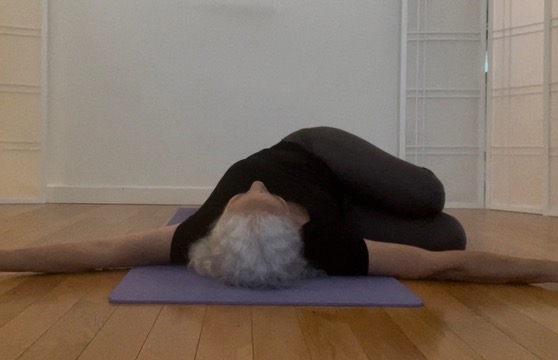
This gentle, supine, spinal twist not only releases tension in the lower back, but also massages your abdomen. This can help to relieve stress-related digestive issues.
When your anxiety is really high, yoga instructors may start a yoga routine with active flows, Vinyasa styles of yoga and variations of sun salutations before accessing static postures and stillness.
Yoga, with its blend of mindful movement and conscious breathing techniques, provides a multi-faceted approach to stress management. Scientific research supports its effectiveness in modulating the nervous system and promoting overall wellbeing. As we navigate the complexities of life, incorporating yoga routines into our lives might just be the key to finding balance and inner peace. It is particularly effective when combined with breathing exercices.
Let Beatrice Appay help to reduce your stress levels
Experienced yoga practitioner, Beatrice Appay, is here to help with anxiety and stress reduction. She’s passionately enthusiastic about this type of yoga, as well as breathwork and meditation, for their mental and physical health benefits.
Beatrice offers yoga coaching sessions for beginners through to advanced, in small groups or one-to-one. Contact her to find the best yoga class for you.
Further reading and scientific reference material:
(1) Gerritsen RJS, Band GPH. Breath of Life: The Respiratory Vagal Stimulation Model of Contemplative Activity. Front Hum Neurosci. 2018 Oct 9;12:397.
(2) Basu-Ray I. A Mechanistic Model for Yoga as a Preventive and Therapeutic Modality. Int J Yoga. 2021 May-Aug;14(2):152-157.
See also:
Lehrer, P., & Gevirtz, R. (2014). Heart rate variability biofeedback: How and why does it work?
The Future of Yoga for Mental Health Care
Stress fear and anxiety-2019 : Neurobiological links between stress and anxiety
